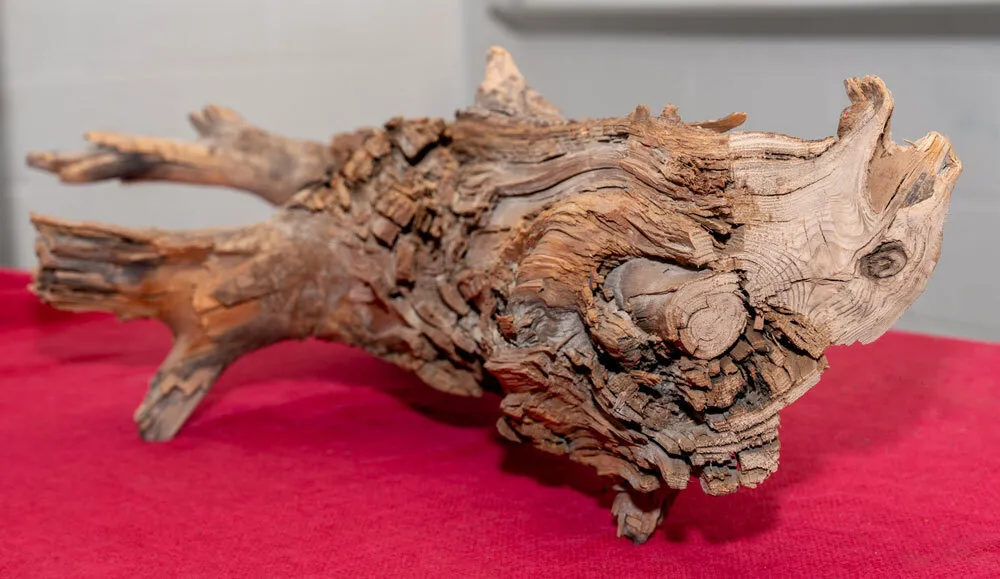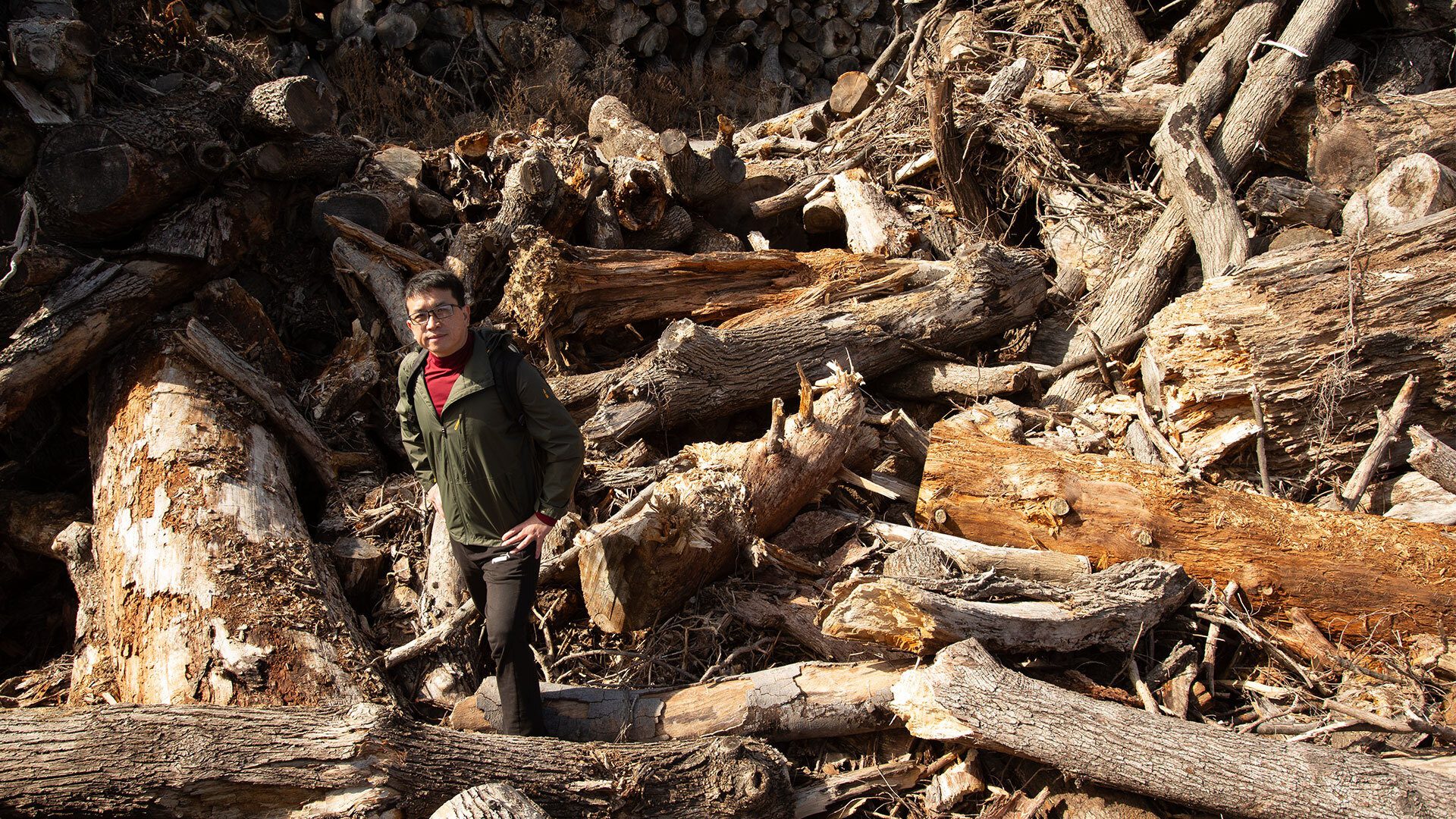- September 30, 2024
- By Emily C. Nunez
A seemingly ordinary old log could help redefine strategies to tackle climate change, according to a new University of Maryland study.
Professor Ning Zeng unearthed the cedar log in Quebec, Canada, and later learned the tree it came from fell some 3,775 years ago, during the days of the Babylonian Empire and China’s First Dynasty. An analysis by a team of researchers he led appeared Thursday in the journal Science, revealing that the log had lost less than 5% carbon dioxide from its original state, thanks to the low-permeability clay soil that covered it. It was so well-preserved, Zeng said, “You could probably make a piece of furniture out of it.”
Understanding the unique environmental factors that kept that ancient log in mint condition could help researchers perfect an emerging climate solution known as “wood vaulting,” which involves taking wood that is not commercially viable—such as trees destroyed by disease or wildfires, old furniture or unused construction materials—and burying it to stop its decomposition.

Trees naturally sequester carbon dioxide, a potent planet-warming gas, for as long as they live, making tree-planting projects a popular method of mitigating climate change. But on the flip side, when trees die and decompose, that greenhouse gas is released back into the atmosphere, contributing to global warming.
Zeng has been studying the concept of removing dead wood from the natural “carbon cycle” to help fight global warming for more than a decade, including launching a startup, Carbon Lockdown, to commercialize the process.
“People tend to think, ‘Who doesn’t know how to dig a hole and bury some wood?’” Zeng said. “But think about how many wooden coffins were buried in human history. How many of them survived? For a timescale of hundreds or thousands of years, we need the right conditions.”
He was digging a trench with other researchers in 2013 to bury fresh wood on a Quebec farm with clay soil that helps keep decomposers like oxygen, fungi and insects at bay, when he found the log featured in the Nature study 6.5 feet deep.
It was a “kind of miraculous” chance discovery, Zeng said. “I remember standing there thinking, ‘Wow, here’s the evidence that we need!’”
While past studies have analyzed old samples of preserved wood, they tended to overlook the surrounding soil conditions, according to Zeng.
“There is a lot of geological and archeological evidence of preserved wood from hundreds to millions of years ago, but the focus of those studies was not ‘How we can engineer a wood vault to preserve that wood?’” Zeng said. “And the problem with designing a new experiment is that we can’t wait 100 years for the results.”
Shortly after the Quebec dig, UMD’s collaborators at MAPAQ, a government ministry in Montreal, conducted carbon dating to determine the log’s age. Then, in 2021, Visiting Research Professor Liangbing Hu in UMD’s Department of Materials Science and Engineering helped Zeng analyze the sample’s microscopic structure, chemical composition, mechanical strength and density. Compared to a freshly cut Eastern red cedar log, the ancient sample had lost very little carbon dioxide.
Because clay soil is so common, wood vaulting could become a viable and low-cost option in many parts of the world. Zeng said the technique is best paired with other tactics to reduce greenhouse gas emissions, and he and his colleagues look forward to putting what they’ve learned into practice.
“The urgency of climate change has become such a prominent issue,” Zeng said, “so there was even more motivation to get this analysis going.”
